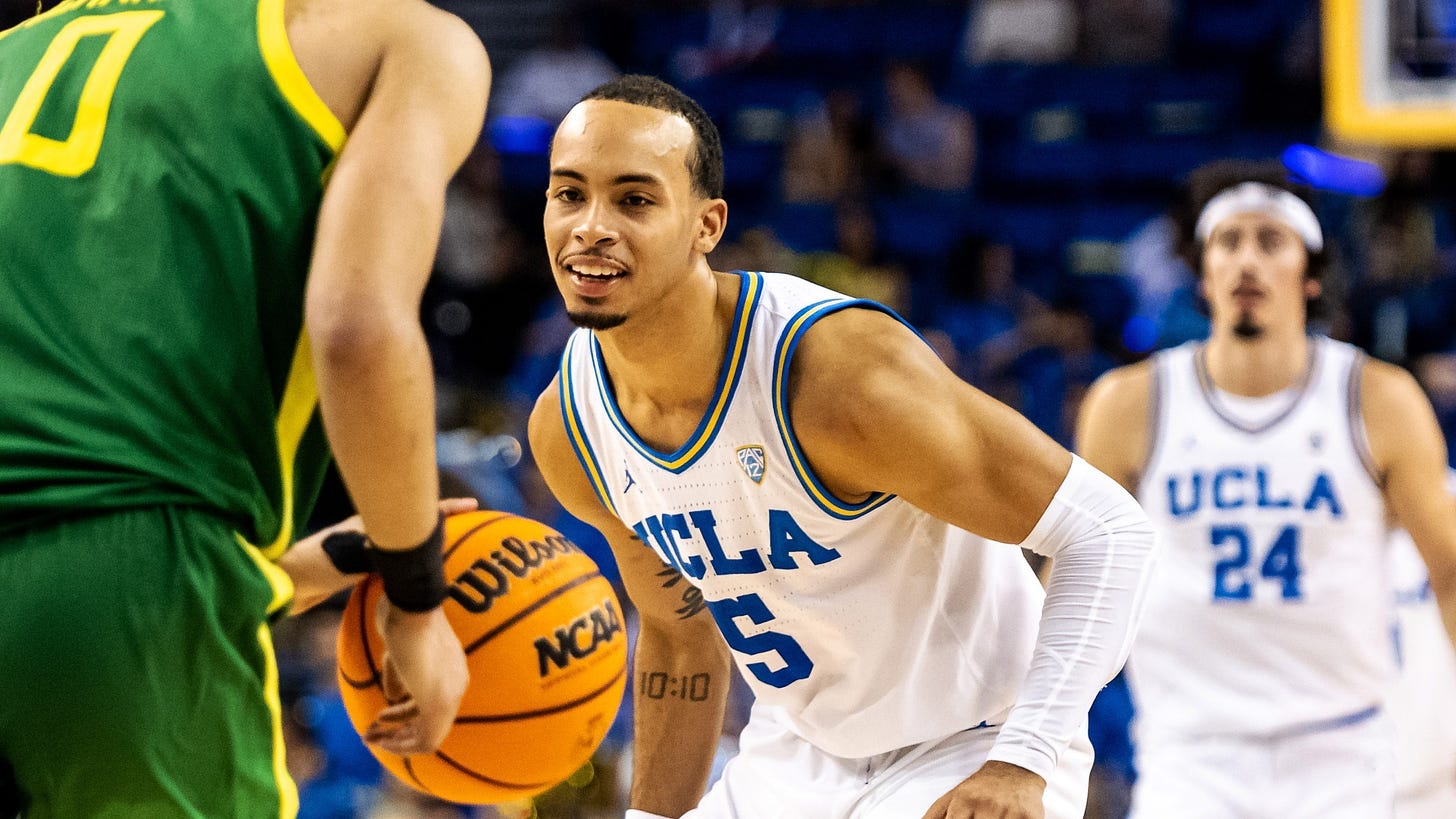Amari Bailey: 2023 NBA Draft Scouting Report
The intangibles stand out, though there is a lot to clean up for this young and highly-touted UCLA Bruin
In the social media age, young players can amass an international following before they even step foot on a college basketball court. Being highly touted as a recruit at a young age can be damaging if handled the wrong way. Pressure can break you, lofty expectations drain you, and being thrust into the spotlight can paralyze you.
That’s why, when Amari Bailey chose to go to UCLA to play for Mick Cronin, I had a feeling he’d be different. Bailey was a highlight tape star at a young age, starring on the reality TV show Bringing Up Ballers and was a McDonald’s All-American playing for the talented Sierra Canyon program. The spotlight was on him from a young age. So when Bailey opted to learn from Cronin, an uncompromising defense-first coach who didn’t care about his star power and only his effort, it revealed a lot about his character.
Bailey bought into his role with UCLA this year, even if the results weren’t always pretty. He split backcourt reps with Tyger Campbell, was third or fourth in the pecking order on offense at all times, worked with poor spacing thanks to Adem Bona and the constant Jaime Jaquez post-ups, and had some pretty tough performances throughout the year.
By the end of the season, Bailey had figured out how to fit with that group. He was starting to be more aggressive on offense, was less erratic with the ball in his hands, and seemingly was trusted a great deal more by his teammates. Over UCLA’s final six games (coming at the most important time of the year), Bailey averaged 17.3 points on 56/47/82 splits, 4.8 rebounds, 3.0 assists, and only 2.5 turnovers a game.
That’s a wildly small sample, though it is important to know the context of a player peaking at the right time. Amari carried that momentum into the NBA Draft Combine two months later, where he was one of the better guards on the floor and flashed more skill as a lead ball handler in a well-spaced system.
When projecting Bailey forward, I keep searching for that go-to skill of his on offense. He’s a fairly well-rounded player statistically, a big guard who was effective off-ball and had moments of on-ball creation. But the tape doesn’t show enough juice as a scorer, facilitator, driver, or shooter to look at and say “yes, that’s what Bailey does better than other guards.”
The threshold of being an effective do-it-all guard is supremely high. Bailey might have what it takes, from an intangible and athleticism perspective, to tap into those traits and become such a guy. But without a track record of harnessing those skills, it’s hard to trust an inconsistent pull-up shooter and a guy who had a negative assist-to-turnover ratio as the right option to be given the keys to an offense at the next level.




